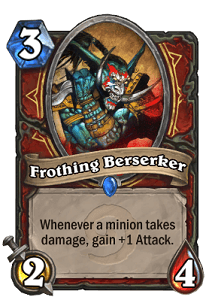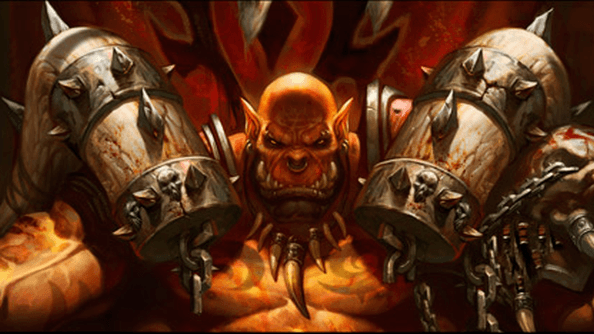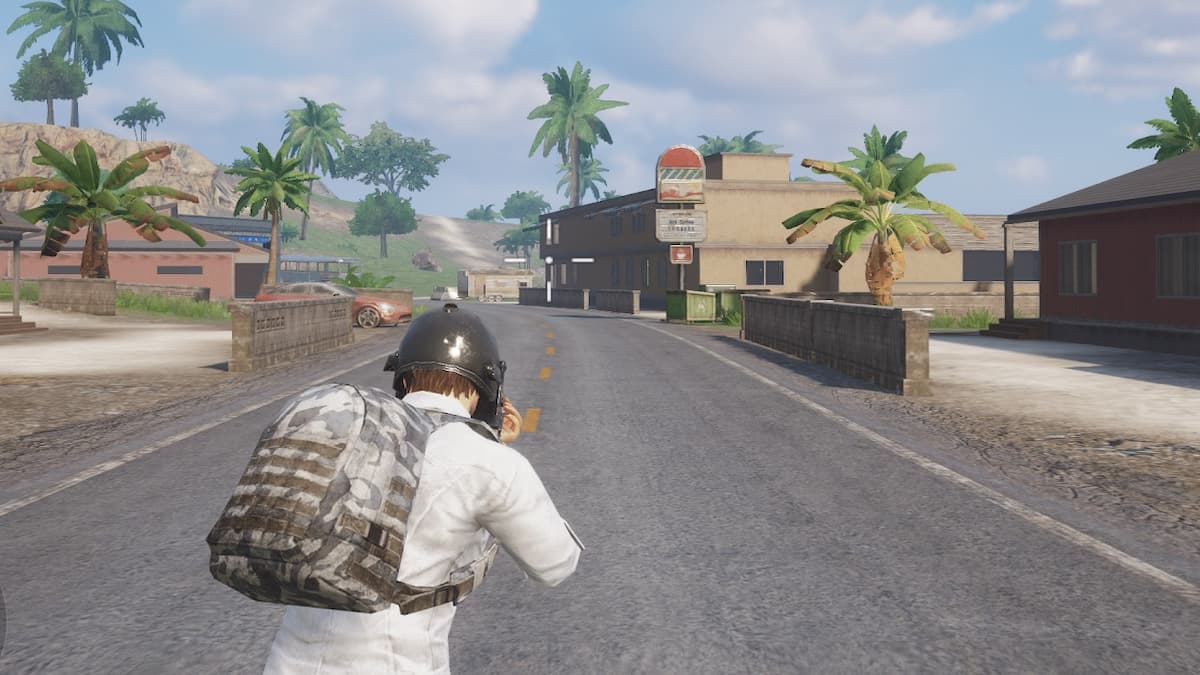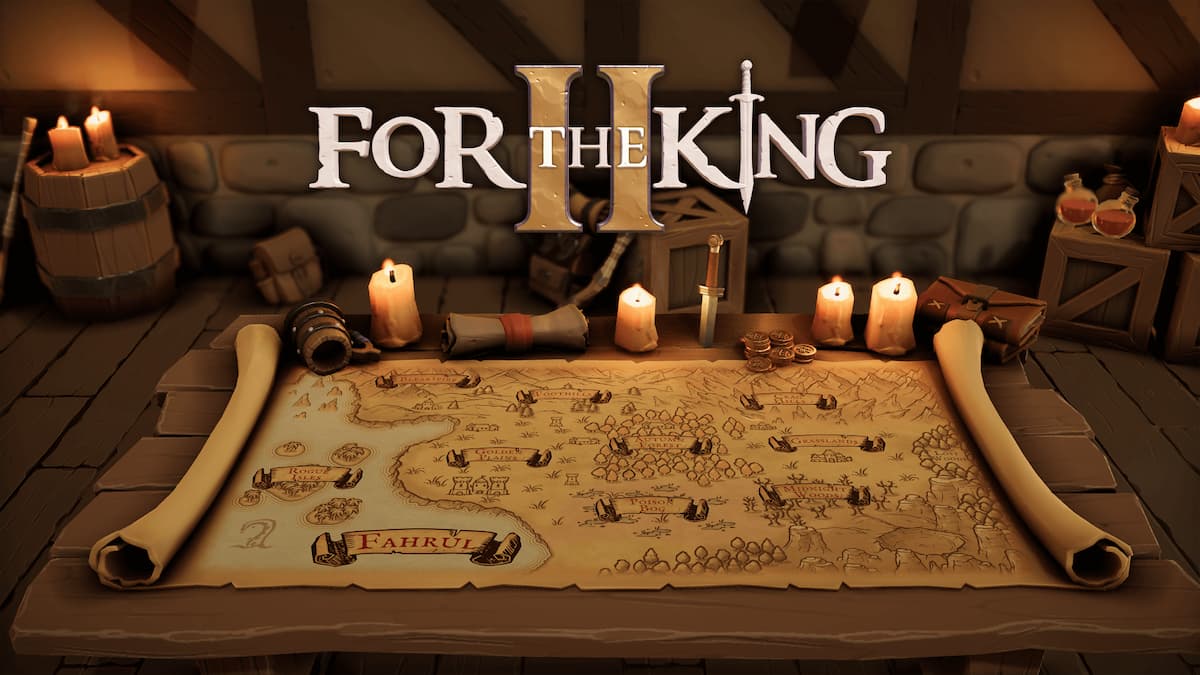We’re just passing the halfway point on our series of Hearthstone basic deck guides! Right now, the Warrior is an extremely popular class to play due to the powerful Patron Warrior deck making the rounds. If you’ve never played Warrior before, or you’re new to Hearthstone in general, this basic warrior deck will help you get familiar with how the class plays!
Unlike our previous decklists, this basic deck doesn’t come from a famous player. Rather, it’s a variation on the typical basic warrior deck seen around Icy Veins, et al., coming from user Lukieman.
This deck assumes that you’ve reached at least level 10 as a warrior — which can be done by practicing against the innkeeper (AI), or playing matches against human opponents — best done through the Casual play option before setting foot in Ranked.
The warrior’s focus on weapons makes it an excellent class for control decks.
Wait, you never told me how weapons work!
Weapons allow your hero to directly attack minions and other heroes, but the attacking hero will be damaged if aiming at anything with an attack value. They are a special sort of card available to the warrior, paladin, rogue, shaman, and hunter. All other classes can make use of them in various ways, but do not natively have the ability to equip them. Weapons are equipped to the left of your hero’s portrait, and have Durability in place of Health. Each use of a weapon decreases its durability by one.
The Decklist
 Today’s deck has a variety of fast cards — minions with Charge that can attack immediately, but tend to have low health — and some combinations to allow a limited amount of low-cost removal. Your goal is to seize the early game by playing fast cards and making use of your weapon, so that you can blot out your opponent by playing bigger cards and pumping out consistent damage.
Today’s deck has a variety of fast cards — minions with Charge that can attack immediately, but tend to have low health — and some combinations to allow a limited amount of low-cost removal. Your goal is to seize the early game by playing fast cards and making use of your weapon, so that you can blot out your opponent by playing bigger cards and pumping out consistent damage.
Minions
You won’t see the Elven Archer played often in ranked matches. It’s a 1/1 that does 1 damage to an enemy when played. Playing this card in the early game is a waste, but it has great synergy with Execute, a spell we’ll get to a little later. Bluegill Warrior allows you to come out of the gate swinging, but if you’re facing a mage be aware that it will be picked off very quickly — so try to avoid playing it for the sake of getting a body down, in that case. Instead, since mages do not use weapons, the Acidic Swamp Ooze is a strong choice.


Novice Engineer gives you some much-needed card draw in exchange for a smaller body on the field. It’s a decent target for a Shattered Sun Cleric, and also does well when played while the Stormwind Champion is on the field. The Gurubashi Berserker is at home in a basic warrior deck, as it gains +3 attack each time it is damaged. You’ll need to hit it twice to see value from the card, which can often be done at no cost to you — use it against a paladin’s Silver Hand Recruit, for example, to efficiently add value to the card. Be aware that the card’s ability to spiral out of control makes it a priority target for removal or silencing.



New faces in this basic deck include the Kor’kron Elite and Stormwind Knight — not to be confused with the Stormwind Champion above. The Kor’kron Elite is great for building your momentum, and can be held back to seal your opponent’s fate. Drop it behind a Sen’jin Shieldmasta to help it survive a little longer. If you have no need to urgently do damage, or you suspect a Swipe or Flamestrike is coming, play Chillwind Yeti instead.
The Stormwind Knight serves as an inversion of the typical charge card, with high health and low attack. It’s great for removing troublesome low-cost cards like Knife Juggler and has enough health to make multiple trades.


Spells
Your highest priority during the mulligan phase of the game — when you can choose to shuffle your initial cards back into your deck and draw new ones — is to get your hands on the Fiery War Axe. It gives the paladin’s Truesilver Champion, which was the subject of rapturous praise in the corresponding guide, a real run for its money. At just 2 mana, it allows you to equip a 3/2 weapon. Anything important your opponent plays in the first few turns of the game will usually fall to the 3 attack; often, just the threat of this weapon is enough. Hold onto it, and never use it to swing at your opponent’s face in the early game.
If you’re unable to find it early on, Shield Block can be used to draw another card. It also adds 5 armor, which is separate to health and must be depleted first. Armor effectively allows you to have over 30 health at a time, given the right circumstances. This spell can help you to outlast aggro decks, especially when combined with use of Armor Up!, the warrior’s hero power. It works great in combination with some other cards we’ll be discussing as upgrades for this basic warrior deck.


Speaking of combinations, Execute can be played from a variety of other cheap cards. It allows you to destroy any minion that has taken damage, even if it’s only 1 point — justifying Elven Archer alone. If there are two or less enemy minions on the board, Cleave can be used to hit both and followed with Execute to destroy the minion of your choice. Whirlwind, dealing 1 damage to all minions (including your own). It’s great for popping Divine Shields and plays well with your Gurubashi Berserker, plus its utility makes it an extremely popular card in warrior decks of all stripes.



Upgrades
Patron Warrior plays similarly, at its outset, to the basic warrior deck we’ve been discussing. It builds towards one explosive turn where unprepared opponents can be brought from 30 health to “well played.” Two of its key cards, Emperor Thaurissan and the Grim Patron itself can be found in the first wing of the Blackrock Mountain solo adventure, costing 700 gold or $5.99 to access.
Arcanite Reaper, from the basic set, is a potential substitution for your Stormwind Knight. It costs one mana more, but it is much more likely to stick around to use both of its charges. When played, a Wild Pyromancer can provide two (or more, if buffed) turns of Whirlwind conditions. Use it on a filled board with a Frothing Berserker for a massive scaling of attack. It also activates the Acolyte of Pain, giving you the potential for plenty of card draw.



Sea Reaver is a neat, if unpredictable addition from the Grand Tournament that synergizes nicely with warrior decks — many rely on friendly minions taking damage to trigger various effects. Bash and Orgrimmar Aspirant are great choices for a more aggressive deck, and Bash is able to shoot down a Warsong Commander or Grim Patron before things get too out of hand.



Conclusion
The warrior has some of the strongest basic cards of any class due to their massive potential for devastating combinations. This basic warrior deck will help you with early game control and, in the hands of a master, it can be upgraded into something truly devastating!







Published: Oct 12, 2015 06:47 am